Automation
Automation includes the use of various equipment and control systems such as machinery, processes in factories, boilers,[3] and heat-treating ovens, switching on telephone networks, steering, stabilization of ships, aircraft and other applications and vehicles with reduced human intervention.[7] Job losses and downward mobility blamed on automation have been cited as one of many factors in the resurgence of nationalist, protectionist and populist politics in the US, UK and France, among other countries since the 2010s.In Ptolemaic Egypt, about 270 BC, Ctesibius described a float regulator for a water clock, a device not unlike the ball and cock in a modern flush toilet.[21] The governor received relatively little scientific attention until James Clerk Maxwell published a paper that established the beginning of a theoretical basis for understanding control theory.[28] The development of the electronic amplifier during the 1920s, which was important for long-distance telephony, required a higher signal-to-noise ratio, which was solved by negative feedback noise cancellation.Call volume eventually grew so fast that it was feared the telephone system would consume all electricity production, prompting Bell Labs to begin research on the transistor.Moreover, some studies seem to indicate that industrial automation could impose ill effects beyond operational concerns, including worker displacement due to systemic loss of employment and compounded environmental damage; however, these findings are both convoluted and controversial in nature, and could potentially be circumvented.Early in the Industrial Revolution, when inventions like the steam engine were making some job categories expendable, workers forcefully resisted these changes.[58] Erik Brynjolfsson and Andrew McAfee argue that "there's never been a better time to be a worker with special skills or the right education, because these people can use technology to create and capture value.The study, released as a working paper in 2013 and published in 2017, predicted that automation would put low-paid physical occupations most at risk, by surveying a group of colleagues on their opinions.[citation needed] Hazardous operations, such as oil refining, the manufacturing of industrial chemicals, and all forms of metal working, were always early contenders for automation.Former analog-based instrumentation was replaced by digital equivalents which can be more accurate and flexible, and offer greater scope for more sophisticated configuration, parametrization, and operation.This was accompanied by the fieldbus revolution which provided a networked (i.e. a single cable) means of communicating between control systems and field-level instrumentation, eliminating hard-wiring.[85] Technologies like solar panels, wind turbines, and other renewable energy sources—together with smart grids, micro-grids, battery storage—can automate power production.Global automatic milking system sales have increased over recent years,[91] but adoption is likely mostly in Northern Europe,[92] and likely almost absent in low- and middle-income countries.Currently, it can still require a large amount of human capital, particularly in the third world where labor costs are low so there is less incentive for increasing efficiency through automation.The purpose of a surveillance system is to record properties and trajectories of objects in a given area, generate warnings or notify the designated authorities in case of occurrence of particular events.Fully automated driving would, in theory, allow closer vehicle spacing and higher speeds, which could enhance traffic capacity in places where additional road building is physically impossible, politically unacceptable, or prohibitively expensive.Automated controls also might enhance road safety by reducing the opportunity for driver error, which causes a large share of motor vehicle crashes.Other potential benefits include improved air quality (as a result of more-efficient traffic flows), increased fuel economy, and spin-off technologies generated during research and development related to automated highway systems."[113] These new revolutionary advancements have drawn attention to the world of automation in an entirely new light and shown ways for it to grow to increase productivity and efficiency in machinery and manufacturing facilities.They can be designed for multiple arrangements of digital and analog inputs and outputs (I/O), extended temperature ranges, immunity to electrical noise, and resistance to vibration and impact.Since these could number in the hundreds or even thousands, the process for updating such facilities for the yearly model change-over was very time-consuming and expensive, as electricians needed to individually rewire the relays to change their operational characteristics.It would tolerate the shop-floor environment, it would support discrete (bit-form) input and output in an easily extensible manner, it would not require years of training to use, and it would permit its operation to be monitored.as the difference between a desired setpoint and a measured process variable and applies a correction based on proportional, integral, and derivative terms, respectively (sometimes denoted P, I, and D) which give their name to the controller type.For example, if the operator presses the floor n button, the system will respond depending on whether the elevator is stopped or moving, going up or down, or if the door is open or closed, and other conditions.Relays were first used in telegraph networks before being developed for controlling other devices, such as when starting and stopping industrial-sized electric motors or opening and closing solenoid valves.Special computers called programmable logic controllers were later designed to replace these collections of hardware with a single, more easily re-programmed unit.Programmable logic controllers (PLCs) are a type of special-purpose microprocessor that replaced many hardware components such as timers and drum sequencers used in relay logic–type systems.Control of an automated teller machine (ATM) is an example of an interactive process in which a computer will perform a logic-derived response to a user selection based on information retrieved from a networked database.

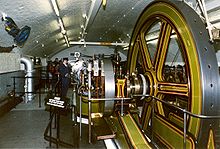
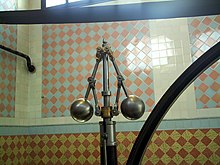
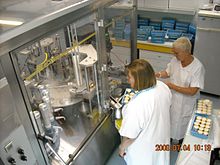




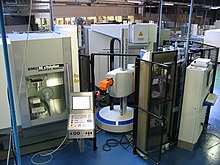

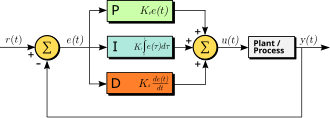

Outline of automationAutomation (disambiguation)Automate (disambiguation)AutomatonAutomationBankingBuildingHighway systemLaboratoryLibraryBroadcastPool cleanerPop musicReasoningSemi-automationAttendantSwitchboardTeller machineVehicularVending machineRoboticsrobotsDomesticVacuum cleanerRoombaLawn mowerGuided vehicleIndustrialManumationSelf-driving carsTechnological unemploymentJobless recoveryPost-work societyThreatASP-DACIEEE Robotics and Automation Awardmechanicalhydraulicpneumaticelectricalelectronic devicescomputersfactoriesairplaneselectricitycontrol systemsmachineryboilerstelephone networkssteeringstabilization of shipsaircraftvehiclesthermostatcontrol loopnegative feedbackcontrol theoryfeedback controllersWorld BankWorld Development ReportJob lossesdownward mobilitynationalistprotectionistpopulistPtolemaic EgyptCtesibiuswater clockPersianBanū MūsāBook of Ingenious Devicesvariable structure controlsfeedback controllercentrifugal governorChristiaan HuygensmillstonesSteam enginesprime moverssteam enginetemperature regulatorsCornelius Drebbelpressure regulatorsspeed controlJacques de VaucansonJoseph Marie Jacquarda punch-card systemRichard Arkwrightwater frameOliver Evansflyball governorsteam craneJames WattBoulton & WattJames Clerk MaxwellelectrificationIrmgard Flügge-LotzSecond World Warfire control systemsnavigation systemsmass communicationsignal processingdifferential equationsstability theorysystem theoryfrequency domain analysisship controlstochastic analysissolid-statedigital logicprogrammable logic controllersindustrial control systemsprocess controlTelefunkenSiemensSimaticPhilipsMullardNorbitLogacecTexacoPort Arthur Refinerydigital controlcomputer hardwaretelephone switchboardBell Labstransistor